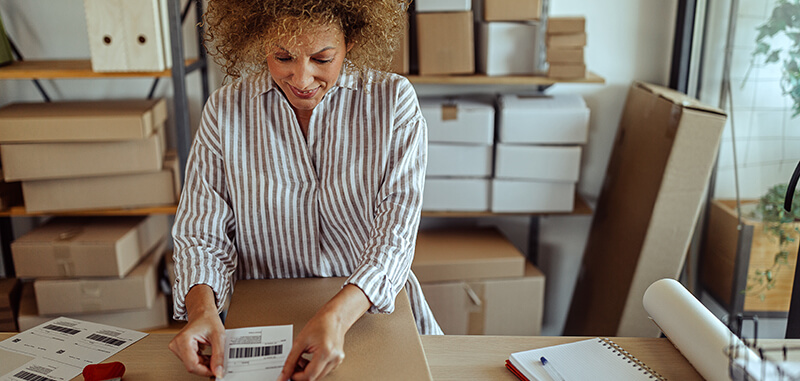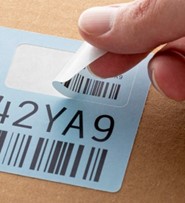
Innovation can come in small packages. Such is the case with piggyback labels. These little marvels of engineering are surprisingly useful for a wide range of applications.
This article will explain exactly what piggyback labels are, how they work, and when to consider using them. We’ll also prepare you for the questions you can expect when you ask your label printer for custom piggyback labels.
What Are Piggyback Labels?
A piggyback label is essentially a label within a label or a label on top of another label.
A conventional, non-piggyback label typically ships on a liner coated with silicone to allow the face stock and adhesive to release easily. (Brush up on your custom label anatomy here.)
A piggyback label, on the other hand, has two liners. Once you remove the label from the bottom layer (the first liner) and apply it to a surface, the face stock becomes a liner for another label. You can then peel off that top layer and apply it to another surface while leaving the bottom label in place.
It should be clear now how piggyback labels get their name. The top label rides piggyback on the bottom label. (And until application, they both ride together on the same liner.)
Common piggyback label types include nested labels — in which the top label and bottom label are different in size — and flush cut labels, where both layers have the same dimensions.
Why Would You Need a Piggyback Label?
Piggyback labels allow users to transfer information from one surface to another, either entirely or partially. Because the label itself becomes a liner once applied, any surface that can accommodate a label of any kind would be suitable for a piggyback label.
If you’re reading this article, you probably already have an idea in mind for your custom piggyback labels. But if you’re wondering what you can do with piggyback labels, the most common applications fall into one of three categories:
- Mailing. You can attach the piggyback label to a mailer or postcard. Recipients might then remove the top layer and use it to address a reply card, item return, or contest entry.
- Inventory and asset tracking. An item’s passage through your operation can be tracked by removing and storing top labels from a piggyback label at each step along the way. Piggyback labels are often used in conjunction with barcodes and scanning devices.
- Recordkeeping. Piggyback labels are a great way to improve your regulatory compliance. In healthcare settings, for example, piggyback labels are often used for patient charge codes or to easily pair patient charts with sample tubes via barcode. The main label would go on the patient chart, and smaller labels would be peeled off of it to affix to the samples.
Is a Piggyback Label the Right Choice? A Label Printer Can Help You Decide
Piggyback labels can add complexity, materials, and cost to the label printing process. So, before ordering custom piggyback labels, it’s worth asking your label printer what your complete range of options and alternatives are.
This, by the way, is a good rule of thumb to follow for any of your label needs. A good custom label printer will always ask plenty of questions so that they can steer you toward label options that fit your budget, achieve your goals, and look spectacular.
If you express an interest in piggyback labels, your label printer might ask you:
- How many labels do you need? Material suppliers often require certain minimum orders. If you only need a few labels (and numbers as high as 10,000 are considered low volume in the label printing business), an alternative to piggyback labels might be more cost-effective.
- What kind of surface will your label be applied to? Glass? Metal? Plastic? Paper? Cardboard? Label adhesives perform differently on different surfaces. Your label printer will want to help you choose the adhesive that works best wherever you plan to apply your custom label.
- Does your label application include printing variable information (such as barcodes)? Your label printer can leave blank sections for the printing of variable information so you can easily change what your label says without constantly reordering.
- What job will your label do? An experienced label printer has seen it all. A piggyback label may be the most effective way to get the job done, but it's very possible your label printer will know of another way to approach the problem.
Piggyback labels are just one of the many innovations that make it easier than ever to showcase your brand and share critical information.
Discover what makes the modern label landscape so fascinating, fun, and functional in our complete “Custom Label Buying Guide.”


